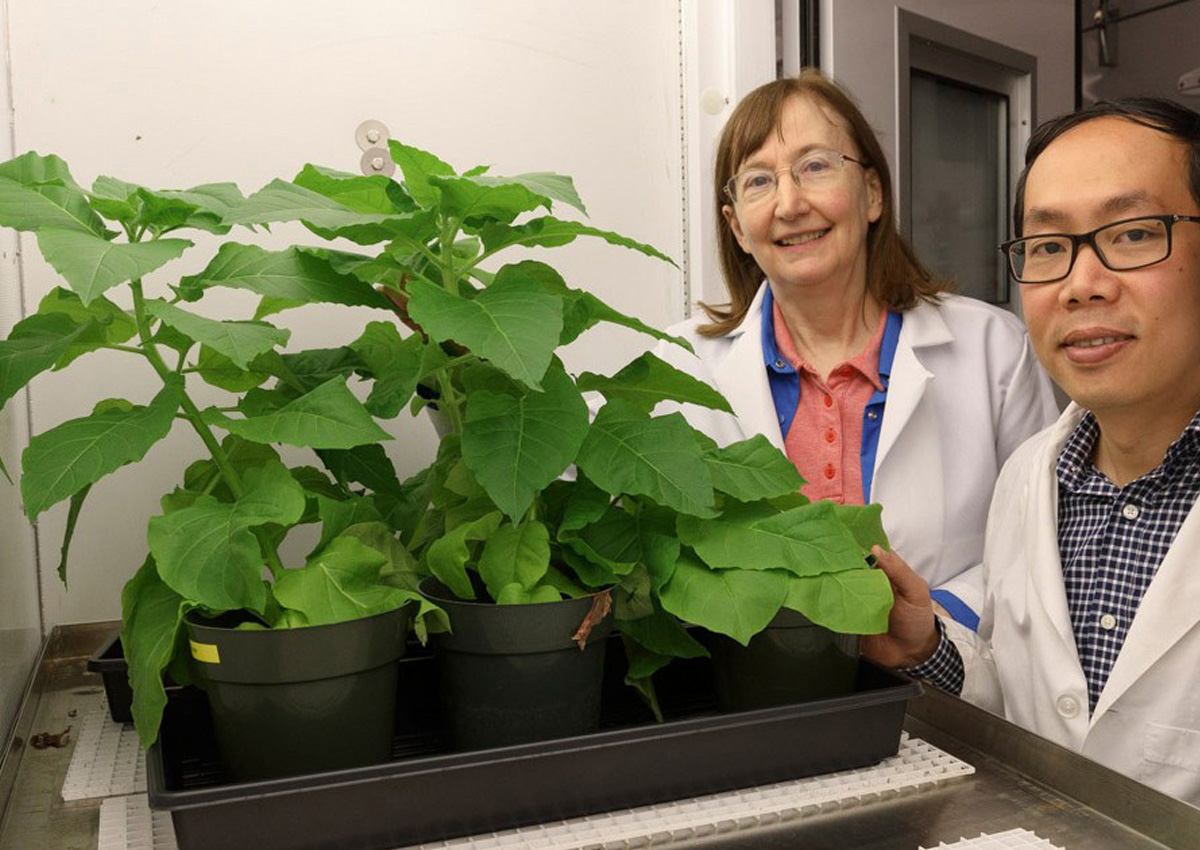
E. coli Bacteria Offer a Path to Improving Photosynthesis
September 23, 2020| |
In a paper published in Nature Plants, scientists described how they engineered the key plant enzyme Rubisco and introduced it in Escherichia coli bacteria to create an optimal experimental environment for studying how to speed up photosynthesis, a holy grail for improving crop yields.
Researchers focused on Rubisco, a slow enzyme that pulls (or fixes) carbon from carbon dioxide to create sucrose. Along with CO2, Rubisco sometimes catalyzes a reaction with oxygen from the air, and when it does, it creates a toxic byproduct and wastes energy, thereby making photosynthesis inefficient. Maureen Hanson, the Liberty Hyde Bailey Professor of Plant Molecular Biology at Cornell University said that one would like Rubisco to not interact with oxygen and to also work faster.
To achieve that, the researchers took Rubisco from tobacco plants and engineered it into E. coli. The researchers were able to break down the process of enzyme assembly and express a single type of large subunit and a single type of small subunit together in E. coli, to understand the enzyme's properties. By doing this, they attained the expression of the enzyme in E. coli that matched what was found in plants. They also discovered that a Rubisco subunit found in trichomes worked faster than any of the subunits found in leaf cells.
For more details, read the article in Cornell Chronicle.
| |
You might also like:
- UC Davis-Led Study Finds Missing Link in Evolutionary History of Rubisco
- Scientists Unravel Mystery of Photosynthesis
- Experts Unlock Key to Photosynthesis
Biotech Updates is a weekly newsletter of ISAAA, a not-for-profit organization. It is distributed for free to over 22,000 subscribers worldwide to inform them about the key developments in biosciences, especially in biotechnology. Your support will help us in our mission to feed the world with knowledge. You can help by donating as little as $10.
-
See more articles:
-
News from Around the World
- FAO Facilitates Agri-food Systems Transformation of Cities Worldwide
- Ugandan Farmers Want Bt Maize to Address Fall Armyworm Challenge
- 10 New Genes Identified for Resistance to Stripe Rust Disease
- Research Team Turns to Wild Crop Relatives in Climate Change Battle
- Scientists Identify New Resistance Gene to Potato Disease that Caused Irish Famine
- Bt Cotton Increased Farmers' Produce by 10-Fold in China
-
Research Highlights
- E. coli Bacteria Offer a Path to Improving Photosynthesis
- Scientists Analyze Whole Genome Sequence of Water Buffalo, Cattle for Domestication Signatures
-
Plant
- CRISPR-Cas9 Reveals Genes Involved in Rice Heading Date
- Transgene-free PDS Mutants in Potato Generated
- TALENs Used for Genome Editing of an Algal Biodiesel Candidate
-
Health
- Research Highlights COVID-19 Impacts on Food Security in Kenya and Uganda
-
Read the latest: - Biotech Updates (January 14, 2026)
- Gene Editing Supplement (December 17, 2025)
- Gene Drive Supplement (February 22, 2023)
-
Subscribe to BU: - Share
- Tweet

